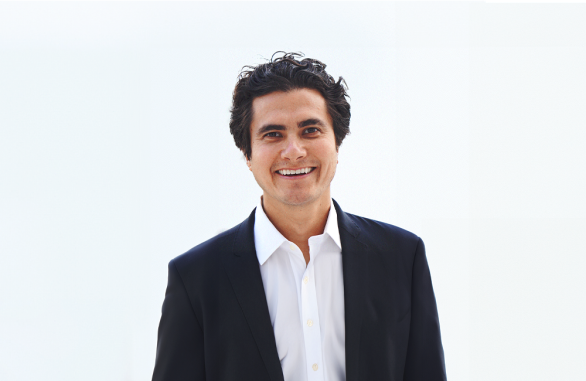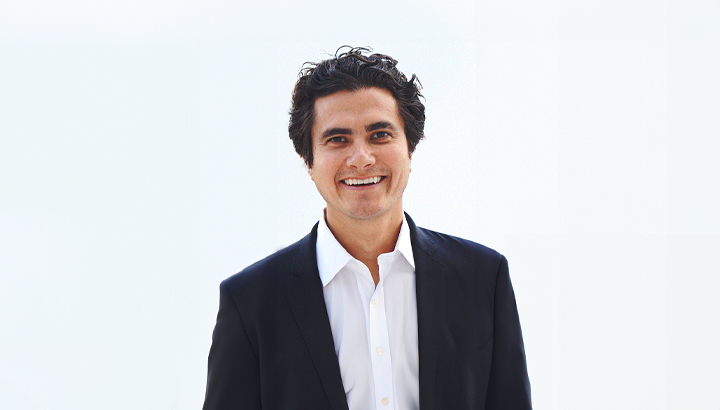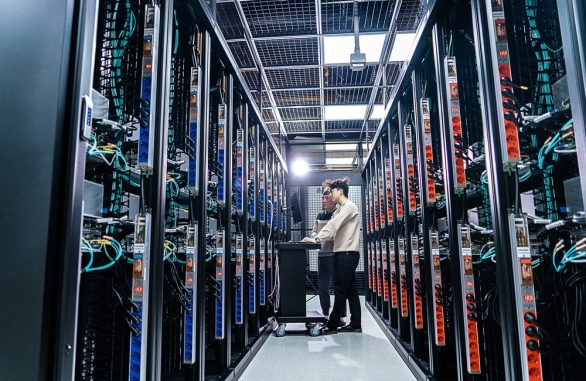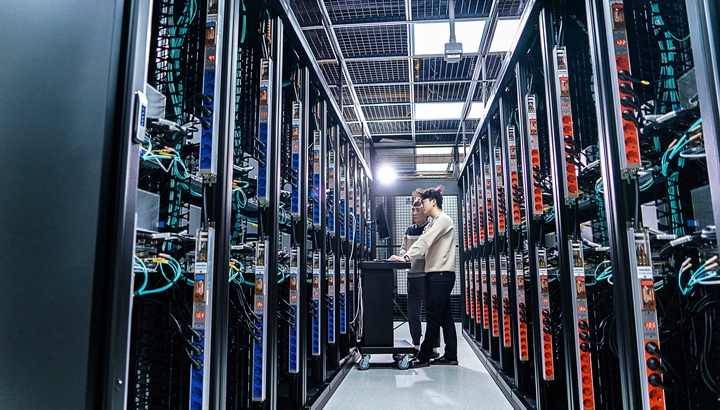Over half of the world’s population currently lives in urban areas – a figure that is projected to increase to 68% by 2050. In urban landscapes with increasingly dense populations, issues such as traffic congestion and pollution can cause a myriad of problems for residents. City planners and local governments around the world have responded to this by creating smart cities.
Korea has become a global pioneer in using tech solutions to improve urban infrastructure in smart cities. According to the Smart Cities Index Report 2022, an academic project led by Yonsei University and the University of Cambridge, Seoul topped a ranking of 31 cities in the Urban Intelligence category, which evaluates how cities are applying advanced technologies like big data, AI and IoT to solve urban problems.
With aggressive efforts being made at a national level to improve city life, forward-thinking tech companies are taking an active role to make cities smarter and more sustainable.
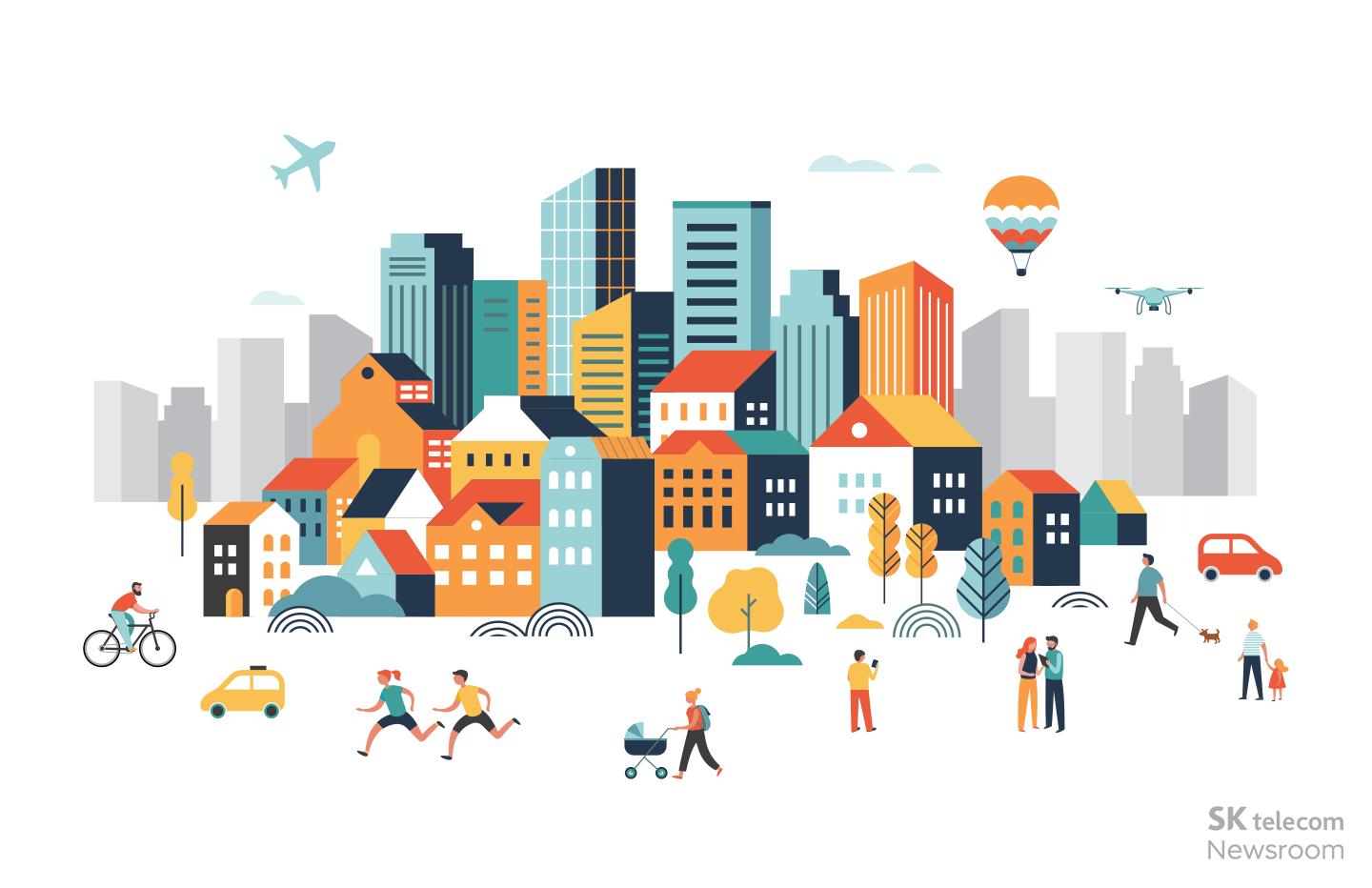
Taking Location Analysis to the Next Level with AI
SKT is keen to put its advanced telecommunications data and AI solutions to good use in the smart city sector.
To this end, SKT has developed the award-winning AI-powered location intelligence platform named ‘LITMUS.’
LITMUS was designed to resolve urban problems by analyzing via deep learning mobile subscribers’ de-identified location data. Using big data and AI-powered technology, it helps operators gain an understanding of the context of city-dwellers’ movements to analyze and predict their behavior patterns. While conventional location analysis solutions typically probe location and movement data, LITMUS works in a more sophisticated manner: It also analyzes “purposes” and “transportation means.” That allows solution operators to look not just ask “where?” but also examine notions of “how?” and even “why?”
The potential of this powerful new form of location data analysis solution to improve city life has already been heralded. Indeed, its competitiveness was recognized by the GLOMO Awards, where it this year scooped Best Mobile Innovation for Cities award.
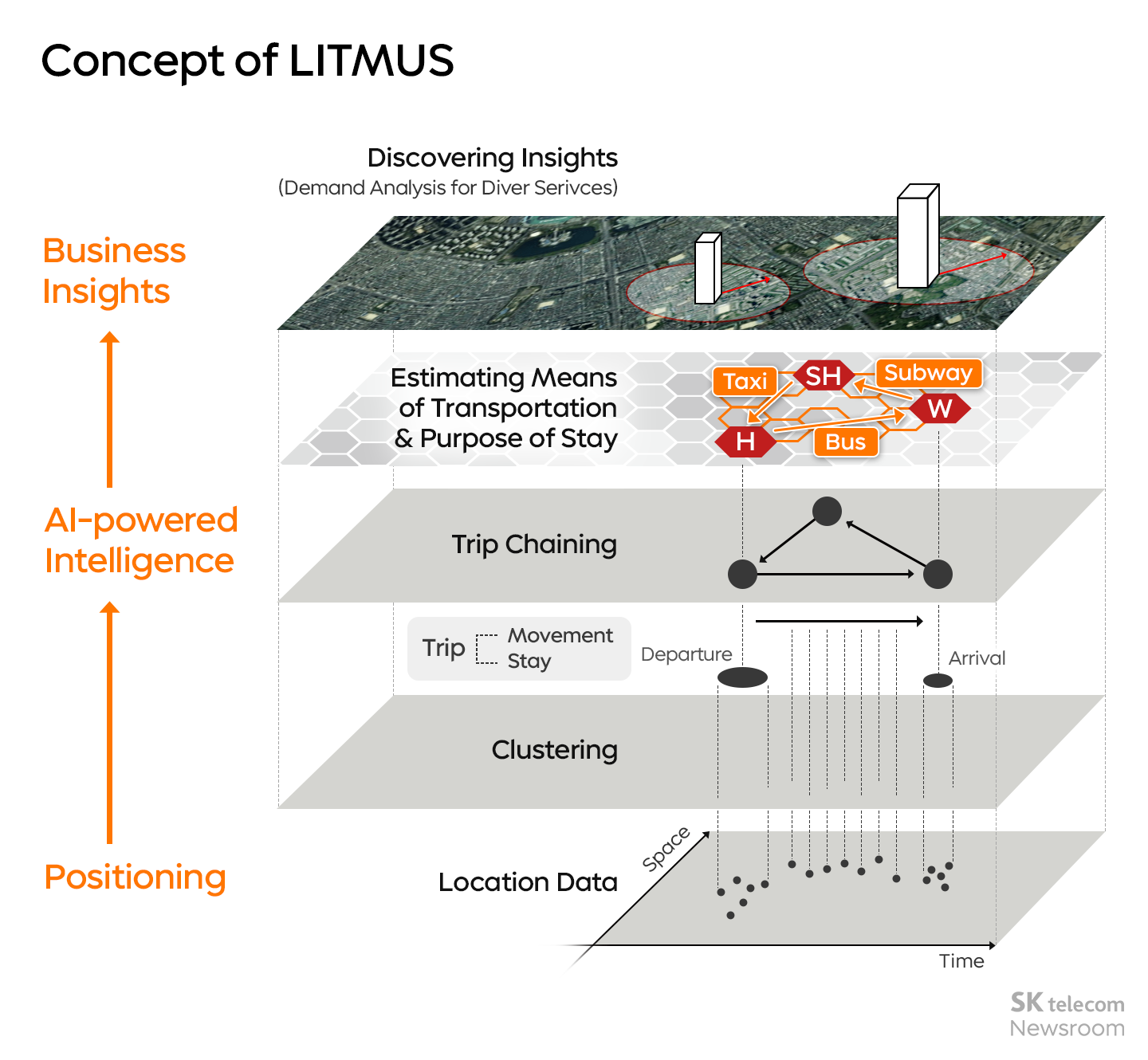
Putting LITMUS to the Test: Practical Applications
SKT and its partners, such as local governments and city planners, have already found a range of practical applications for the technology in real-world settings.
To reduce traffic congestion, LITMUS has been put into action to create Intelligent Transportation Systems (ITS), networks that can efficiently and accurately identify traffic volumes in real-time on key routes.
A two-month pilot program conducted in conjunction with a local government body has yielded impressive results. It showed a 24% improvement in average traffic congestion during commuting hours. The pilot was conducted on Fridays, typically the day of the week when traffic in this area was the heaviest. Considering that the pilot program was conducted by using average traffic data of the past two months, the effect is expected to be greater when LITMUS operates on real-time data.
The solution could also help reduce pollution. Tests show that if the waiting time at a single intersection could be reduced by an average of 5,166 minutes per day, carbon emissions could at the same intersection be slashed by about 78 tons per year. That is equivalent to the amount of carbon dioxide absorbed by 29,000 trees in a 12-month period.
In addition, LITMUS helps prevent traffic accidents at intersections by linking city dwellers’ real-time location information to traffic light status data. 2,000 traffic lights and 700 intersections in Seoul are already applied with LITMUS to provide real-time information to drivers.
Road maintenance and construction projects could also find powerful uses for LITMUS, with the solution being used in traffic impact assessment systems. By studying LITMUS data, planners can make smarter decisions about road closures, diversions and signaling well in advance of starting work.
Public transport operators could use LITMUS to make real-time adjustments to routes or gauge dispatch intervals. Data like this could help them make cost-effective investments in public transport networks, rather than making educated guesses about the need to create new transport links.
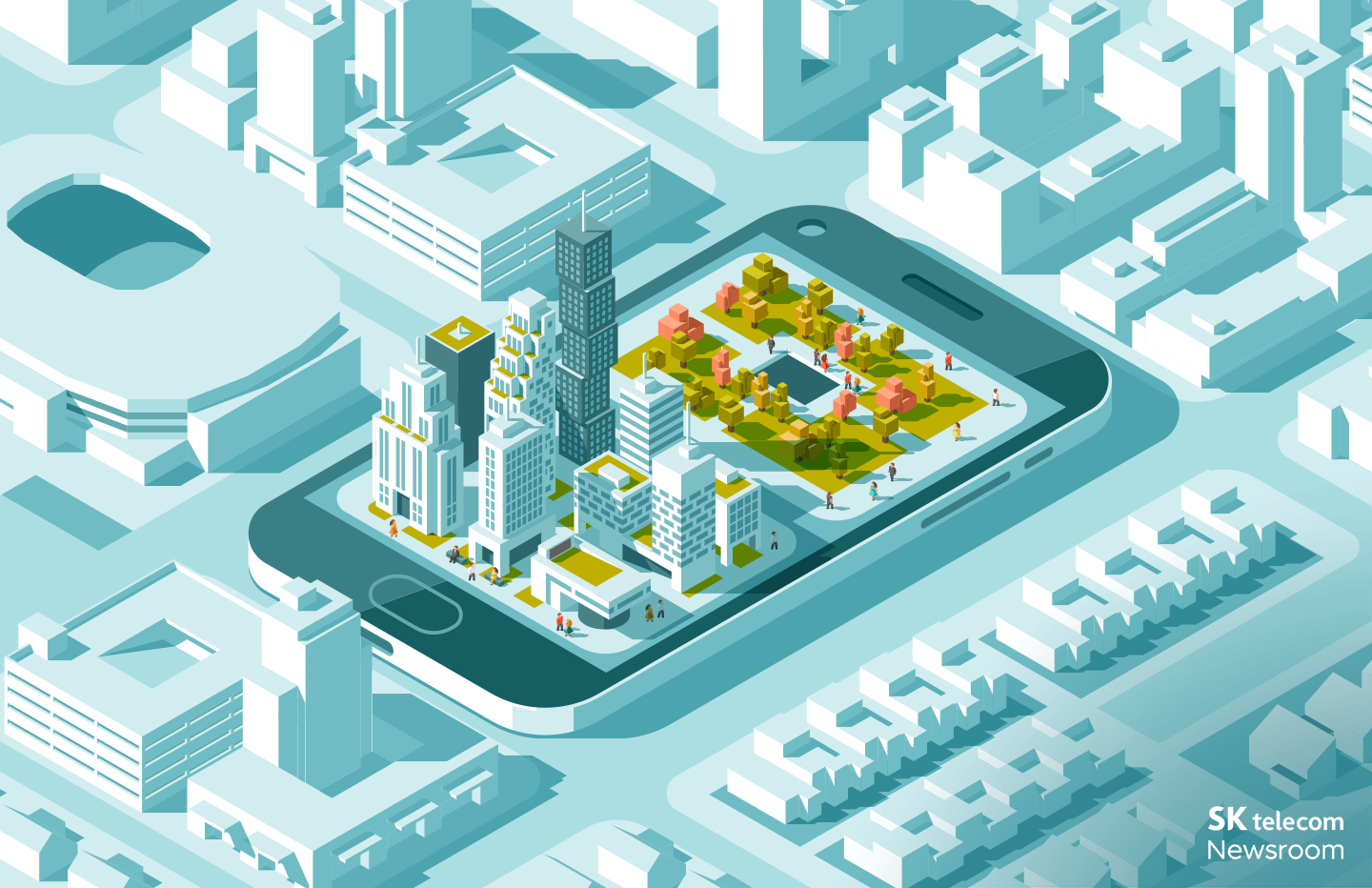
LITMUS is expected to serve as a vital tool for those creating the transport infrastructure of the future. For instance, Urban Air Mobility (UAM), a solution based on renewable energy-powered airborne vehicles, could provide relief for busy road networks. It can help realize an effective UAM service by estimating demand, and determining optimal routes and vertiport locations.
In a recent analysis using LITMUS, SKT was able to analyze potential customers and pinpoint a number of optimal vertiport locations in busy parts of the Korean capital.
Key to Sustainable Future of Cities
LITMUS was created to serve as a key enabler of AI-powered green and smart city transformation. The fact that it is already finding diverse application scenarios speaks volumes about its future potential.
With solutions like these, Korean tech pioneers and city planners will hope to continue demonstrating the transformative power of smart city technology. And that could bring safety, sustainability and improved air quality to the streets of the future.










